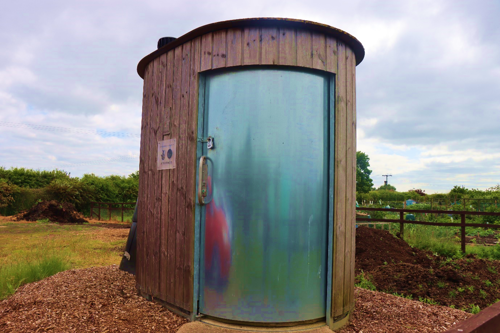Allotment toolkit

Allotment gardening provides the opportunity for a year-round healthy lifestyle. Allotments help to address issues that directly affect people such as food availability and security, healthy eating, sustainability, and healthy living – both physical and mental - whilst at the same time contributing positively to the environment and biodiversity.
This toolkit aims to provide support to Parish Councils and others overseeing allotments in South Cambridgeshire who want to improve their allotments to be the best they can be. For more detail on day to day practical advice of owning an allotment, please visit the Royal Horticulture Society’s website.
If you are looking to get an allotment of your own for personal use, please see a list of allotments (that we know of) across South Cambridgeshire. If you are aware of one not on here, please let us know and we will amend our records.
Governance
The first step to hosting a successful allotment is to ensure good governance with an active committee. Whether your allotments are managed by the Parish Council, a local trust, or a community group, providing real leadership can be a first step to realising a number of other goals. Having an active committee can assist with the group purchase of essentials, such as farmyard manure, soil conditioner, or the maintenance of gates and fences. It also allows the allotments to consider more desirable features to be used by all, such as toilets and a mains water supply.
Roles of an allotment committee could include:
- Informing plot holders of good allotment practice. For example, creating and upholding site rules and facilitating site security.
- Engaging with plot holders to ensure the governance represents all those using the space.
- Arranging for the provision of services to the allotments and the paying of bills.
- Nominating a point of contact so that plot holders know who to contact if a problem arises.
- Ensuring that plots are being used to their maximum potential so minimal space is left to waste. This may include the administration of a waiting list.
- Coordinating any site maintenance and building work that may be required.
- Deciding on allotment fees and ensuring their collection.
- Providing necessary insurance for buildings, equipment owned by the society.
- Arranging for the group purchase of essentials such as seed, manure etc.
Cambridge Council for Voluntary Services help provide advice and support on setting up a committee, including ensuring all the current policies are in place. They can be contacted by emailing enquiries@cambridgecvs.org.uk.
Water
Water can often be the difference between success and failure when taking care of an allotment, and can be a significant cost for allotment societies. Cambridgeshire is the driest part of the country and long spells without rain is common. Bringing in your own supplies of water is time-consuming and tedious, and a metered mains water supply is ideal if it is practicable.
Where a mains water supply is available, it should be considered a precious resource and used in a sensible and considerate manner. The use of water butts to harvest any rain that does fall should be encouraged where possible.
Having water readily available from multiple outlets on the site will lead to a better uptake of the available plots and encourage a more diverse group of allotment-holders. It can be challenging and expensive to lay on mains water, especially if the allotment is remote from the nearest buildings, but without it, the allotments will be much less productive and attractive to prospective allotment-holders.
In addition, establishing links with local farmers or stable owners can provide a source of well-rotted manure, for delivery to the site, that individual or groups of allotment holders to access. Use of organic compost and mulch will also help retain moisture in the soil, helping to reduce water use.
Pest control
Newcomers to growing can often be discouraged by preparing their land and sowing their seeds, only to find that pests eat the crops before they can. Rabbits are one of the biggest threats to allotment growing and a suitable fence is essential to keep them out. Rabbit fencing is required to be around 1 meter in height and dug into the soil to a depth of 15-20cm to stop rabbits form burrowing underneath it. Deer can also pose a threat; however, a larger fence will be required to keep them out.
Having an active committee can help stop the spread of pests as quicker action will be possible. Additionally, the committee can organise for the entire site to be fenced off and gated, rather than individual plots, saving plot holders time and money.
Community Engagement
The key to a successful allotment is it being embedded in its community. This could include saving a plot for a local school to have educational lessons on growing food, or holding community events to raise money for the allotments. If there is any excess food produce from the allotment, donations could be provided to a local foodbank. See a list of Foodbanks in South Cambridgeshire, they can be contacted through duty.communities@scambs.gov.uk to arrange donations.
Being embedded in the community also requires as much of the community to be able to access the allotments as possible. The provision of toilets and nappy changing facilities can encourage families with children to become allotment holders, and having an accessible car park and emergency vehicle access ensures that everyone is able to access the allotment.
Supporting nature
There may be a temptation to maximise growing space within the site, but allotments are part of a network of green spaces in towns and villages, providing steppingstones and wildlife corridors. In return, animals can pollinate crops and eat allotment pests.
Areas on site boundaries, particularly hedges, are some of the richest areas for wildlife, especially for pollinators that can help crops to grow. A hedge around the allotment is invaluable as it can deter unwelcome intruders, form a windbreak, and provide habitat and food for insects, birds, mammals - and people! Hedges can also act as green corridors which allow wildlife to move from place to place in relative safety.
You could also discourage use of chemicals for weed and pest suppression, as they can harm beneficial species. Encourage more natural methods like companion planting, natural barriers like netting, and encouraging natural predators like lacewings and ladybirds by providing habitat piles.
Grant funding
Funding is available through South Cambridgeshire District Council, and other organisations, to help provide the improvement works outlined in this toolkit.
Funding avenues include:
- South Cambridgeshire GrantGrabber
- South Cambridgeshire Community Chest Grants
- South Cambridgeshire Grants for Biodiversity Projects
- CCVS - how to find funding
- Support Cambridgeshire - find-funding
- The National Lottery Community Fund
- Cambridge Water – PEBBLE fund
- Cambridge University Raising and Giving (RAG)
Case study – Swavesey Allotments
The idea for an allotment site in Swavesey started with a working group including residents and members from the Parish Council to build on a site already owned by an allotment charity and leased to the Parish Council. The allotment took a year to establish and was fully up and running by 2012.

The allotment site comprises of 61 plots, mostly 125 sq. metres (22m X 5.7m) in area, with some half-size and members are permitted to have sheds on their plot. Plot holders consist of individuals, couples, and families with members coming from all backgrounds and of all ages.
“Everyone has found that large quantities of high-quality vegetable, fruit and flower crops can be grown successfully with just a modicum of hard graft. The main thing is that all plot holders find that having an allotment plot and growing your own food is not only physically and mentally invigorating but also lots of fun!” – Swavesey Allotment Association Chair.
Originally the site was on a 10 year lease, now renewed to a 20 year lease. The total set up cost was £13,337 with grant funding for this being received from Awards for All (Lottery), Swavesey Parish Council, South Cambridgeshire District Council, Cambridge Press Relief and Cambridge Water. Later further grants were received from Awards for All and Cambridge University RAG for additional items.
What makes Swavesey Allotments stand out?
Swavesey has maintained the best practice of keeping rabbits and deer out of the site, with rabbit and deer fencing around the perimeter. In addition, the allotment is designed to have pathways between plots, meaning there is no shared boundary line on a plot which reduces problems with overhanging vegetation. It also enables tractors to get through, allows emergency vehicle access, and keeps the site social. A car park, large enough for the site is also provided.
For water supply, Swavesey uses mains water, with the permission of the water supplier and a local farmer assisting with mole-draining the water supply pipes throughout the site. They also use ‘dipping tanks’ for watering cans, using galvanised sheep/cattle troughs fitted with ball valve fillers as opposed to taps as they may be left on. There are no hoses allowed and there are 8 water tanks, plumbed into the mains system, providing easy access to water for the use of the allotment members. There is also a waterless toilet on site, and cycle racks have been installed to encourage plot-holders to leave their car at home. The on-site ‘Waterless Toilet’ is particularly helpful for children and the elderly; this was funded by National Lottery Funding and built in 2016, a few years after the 2012 opening of the site.

Swavesey have set up a Plot Holders’ Allotment Association to manage the site and ensure good governance. This helps to build the community, foster volunteer help and helps with fundraising. It also helps with the enforcement of rules right from the start, stops problems growing, and ensures all plot holders are treated equally. Swavesey Allotment Association sets a sufficient level of annual rent to allow the allotments to be inclusive to all, and there are no additional costs for water, muck, or compost. Building community links has led to local horse owners and farmers donating manure, and by building relationships with local tree surgeons, they have use of wood chippings for plot pathways.
The National Allotment Society (NSALG) were helpful to Swavesey with information and guidance when starting up, providing templates for tenancy agreements.

